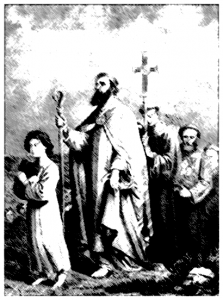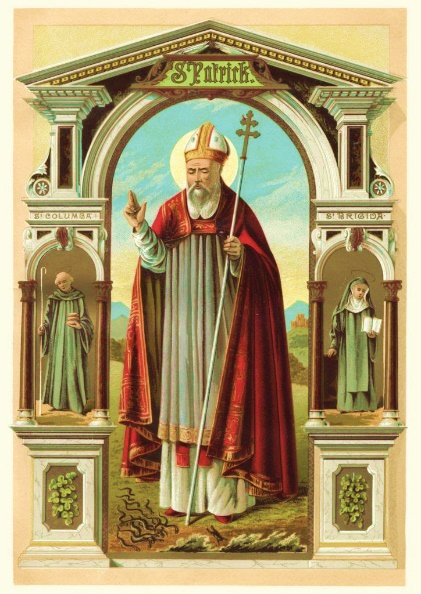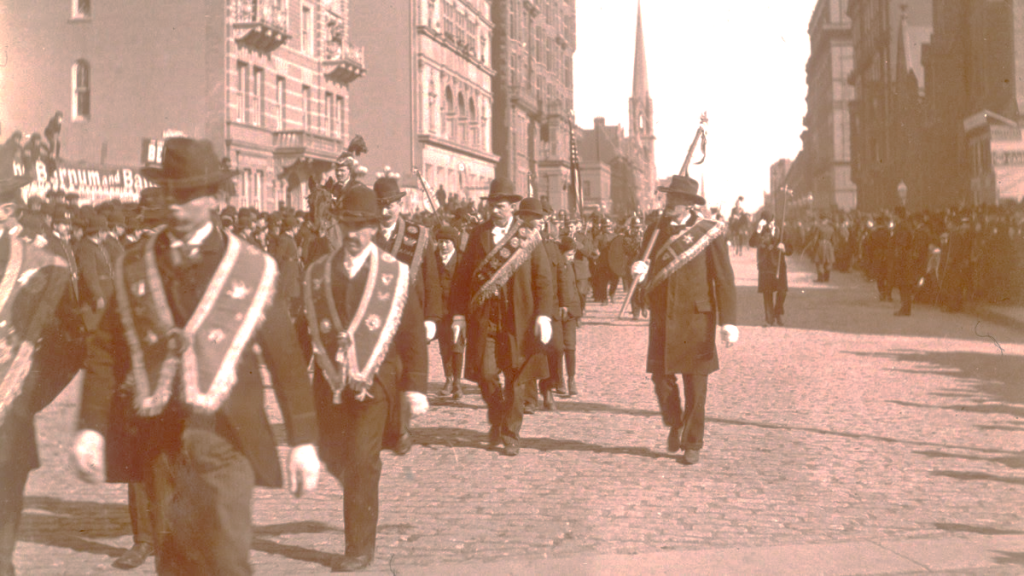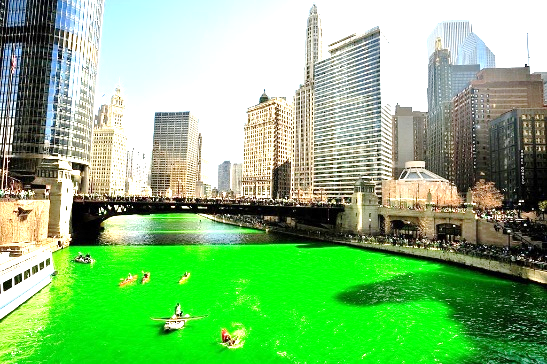St. Patrick’s Day is celebrated on March 17, the fifth century anniversary of his death. The Irish celebrate this day as a religious holiday for over 1,000 years. On St. Patrick’s Day, the coming Christian season of Lent, Irish families traditionally attend church in the morning and celebrate in the afternoon. Lenten restrictions against meat consumption have been waived and people dance, drink, and dine on the traditional diet of Irish bacon and cabbage.
Who was St. Patrick?

Who was St. Patrick Day
According to legend, St. Patrick’s Day of Holiday is St. Patrick’s Day of Wales, St. Patrick, who lived in the fifth century, was the patron saint of Ireland and its national apostle. Born in Roman Britain, he was abducted at the age of 16 and brought to Ireland as a slave. He served as Bishop of Ireland after spending the first sixteen years of his life as a pagan. This allowed him to be captured and sold into slavery and to establish a relationship with the Irish God.
The struggles of St. Patrick’s
He lived as a slave for six years before fleeing to Gaul. Here, he devoted twelve years of his life to the Bishop of Auxerre, the monastery of St. Germain, who was convinced that he was alive and by the end of his study to turn pagans in the direction of God. The young man in The Story of St. Patrick’s Day will soon return to Ireland to convert others to Christianity. And the credit for bringing Christianity to his people.

St. Patrick Struggles
The sometimes famous symbol at the three-leaf-shamrock comes from Irish mythology, where St. Patrick used the object to describe the Trinity: the Father, the Son, and the Holy Spirit, but entities that are not separate but interconnected. In form. The custom of wearing shamrock at the Feast of St. Patrick was given to the faithful.
The myths surrounding his life were further frozen in Irish culture: perhaps the most famous legend of St. Patrick was that he used the Holy Trinity (Father, Son, and Holy Spirit) using three leaves of the native Irish clover. Explained to Shamrock.
St. Patrick’s Day Parade.
More than 100 St. Patrick’s Day parades take place throughout the United States; New York City and Boston are home to the biggest celebrations.
When was the first St. Patrick’s Day celebrated?
First St. Patrick’s Day Celebration? Since the ninth or 10th century, people in Ireland have observed St. Patrick’s Roman Catholic Feast Day on March 17. The first St. Patrick’s Day parade took place in America, not Ireland. Records show that St. Patrick’s Day Parade took place on March 17, 1601, in the Spanish colony of St. Augustine, Florida. The parade and St. Patrick’s Day event was hosted by Irish Victor Ricardo Arthur of the Spanish colony.

History of St. Patrick Day parade
The myth was officially adopted by the US in 1737 when people went on a public outing in Boston. Today’s celebration is social with green paint, a festive parade, and beer indicating Shamrock time. In the same century, homicidal Irish soldiers serving in the Irish military marched on New York City on March 17, 1772, in honor of the Irish patron saint. Enthusiasm for the St. Patrick’s Day Parade in New York City, Boston, and other early American cities only increased from there.
St. Patrick’s Day
Development of St. Patrick’s Day Celebrations Over the next 35 years, Irish patriotism grew among American immigrants, leading to the growth of “Irish Aid” communities such as St. Patrick’s Friendly Sons and the Hibernian Society. Each group holds an annual parade of bagpipes (popular for the first time in Scottish and British forces) and drums. In 1848, several New York Irish relief committees decided to consolidate their march and organize the official New York City St. Patrick’s Day Parade. Today, the parade is the oldest civilian parade in the world and the largest in the United States with 150,000 participants. Each year, approximately 3 million people travel the 1.5-mile parade route to see the parade, which takes more than five hours. Boston, Chicago, Philadelphia, and Savannah also celebrate the day with a parade of 10,000 to 20,000 participants.
Irish in America
By the mid-19th century, many Protestant middle-class members had immigrated to America. When the Great Potato Feminine touched Ireland in 1845, 1 million poor and illiterate Irish Catholics began pouring into America to escape starvation.

Irish in America
Immigrants frustrated with their foreign religious beliefs and voices unknown to the American Protestant majority also struggled to find monthly employment. When Irish Americans in cities across the country took to the streets on the occasion of St. Patrick’s Day to celebrate their heritage, newspapers portrayed them as drunken violent monkeys in cartoons.
The American Irish soon began to realize that their large and growing numbers still had political power that had not yet been exploited. They began to maintain, and their voting alliance known as the “Green Machine” became an important swing vote for political expectation. Suddenly, the annual St. Patrick’s Day Parade became an official show for Irish Americans, as well as a mandatory event to put political candidates to sleep.
In 1948, President Harry S. Truman took part in the St. Patrick’s Day Parade in New York City, a proud moment for many Irish Americans, as their ancestors had to fight stereotypes and racism to gain acceptance in the New World.
The Chicago River is painted green
As Irish immigrants spread throughout the United States, other cities developed their own traditions. One of these is the annual color of Chicago River green. This method began in 1962 when city pollution-control workers used dyes to identify illegal sewage and realized that green could provide a unique way of celebrating the holiday. That year, he released 100 pounds of green vegetable dye into the river – enough to keep it green for a week. Today, to reduce environmental damage, only 40 pounds of dye is used and the river only turns green for many hours.

St. Patrick Day Green River
Although Chicago historians claim that the idea of their city was original to the Green River, some Sawn locals, Georgia (whose St. Patrick’s Day Parade is the oldest in the country, dating to 1813) is believed to have originated in their city. In 1961, he explained that Tom Woolley, a hotel restaurant manager, had persuaded city officials to turn the Savannah River green. The experiment was not planned at all, and the water only took on a greenish-green color. Savannah never tried to reclaim his river, but Woolley (although others deny the claim) personally accused Chicago Mayor Richard J. Said Dolly.
St. Patrick’s Day celebrations around the world
Today, people of all backgrounds celebrate St. Patrick’s Day, especially across the United States, Canada and Australia. Although North America is home to the largest number of structures, St. Patrick’s Day is celebrated worldwide in places far from Ireland, including Japan, Singapore, and Russia. Famous St. Patrick’s Day dishes include Irish soda bread, corn beef, and cabbage, and shampoos. In the United States, people often wear green on St. Patrick’s Day.
In modern Ireland, St. Patrick’s Day is traditionally a religious occasion. In fact, by the 1970s, Irish law stated that pubs were closed on March 17. However, the Irish government, which began in 1995, launched a national campaign to show interest in St. Patrick’s Day, tourism, and Ireland and Irish culture. The rest of the world.
What has Leprechaun got to do with St. Patrick’s Day?
Leprechaun is the symbol of the Irish holiday. The original Irish name for folklore was “Lobarasin”, meaning “accompanying small body”. Belief in Leprechaun probably originated from the Celtic belief in fairies, young men and women, who could use their magical powers for good or evil services. In Celtic folklore, leprechauns were the cranky spirits that caused other fairies’ shoes.
Although only small figures in Celtic folklore, lepers were known for their tricks, which they often used to defend their multi-fiction treasures. May 13 has their own holiday for lectures but is also celebrated at St. Patrick’s, which has many wonderful decorations.